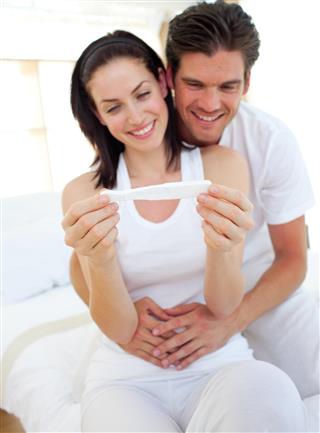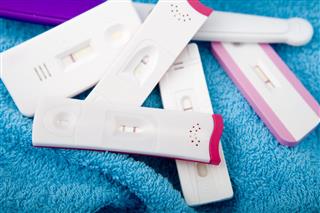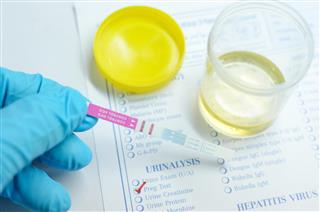
Family planning involves the use of all techniques, practices, and medical devices that help a couple plan their family. It not only helps in deciding the number of children to have but also when to have and how to space their births. For more information read on…
A woman’s ability to decide how many children to have and when, without interference from the government, is one of the most fundamental rights we possess. It is not just an issue of choice, but equality and opportunity for all women. – President Obama
Every year, around 820,000 teens become pregnant in the US, making it the country with the highest teen pregnancy rate. The country also witnesses massive number of abortions with 49% pregnancies being unplanned. However, there are plenty of options available to help couples and teenagers, who are sexually active, avoid such unwanted situations. They can opt from two categories, namely, natural methods and artificial methods. These methods are listed below, according to their effectiveness and convenience, to avert unwanted pregnancies.
History at a Glance
- The Comstock Law (1873) legally restricted information, services, and products of contraception to be distributed in the US.
- Margaret Sanger challenged the law, and in 1916 opened the first family planning clinic in NYC.
- The American Medical Association adopted birth control as a part of its curriculum and services in 1937.
- North Carolina was the first American state to provide contraception services to its citizens, in 1937.
- The FDA (Food and Drug Administration) recognized the oral contraceptive pills and approved its usage by the general mass.
- Title X (1970) was introduced by president, Richard Nixon. This was designed to provide all the services, information, and products of family planning, especially to low-income families.
- Obama administration declared huge Title X grants to defunded Planned Parenthood.
Natural Methods
These methods thwart the use of any synthetic or chemical drugs and devices for family planning. However, to follow this method couples have to be determined and disciplined. Such methods are described below.
Abstinence
Calendar method: This method requires you to be aware of your menstrual cycle. The day one of your period is the first day of the cycle. Counting from day 1, mark day 8 in your calendar and move forward to day 19. The days from day 8 to day 19 are the most fertile days, hence sexual activities during these days should be completely avoided. All the other days pose less risk of conceiving.
Basal body temperature: Women who have irregular periods can benefit from this method. It requires a basal thermometer that can record even a slight change in the temperature. After your periods end, measure your body temperature orally every morning, at the same time, and record it. You will notice that the temperatures recorded each day are pretty consistent until you start ovulating. The day you ovulate, there will be a sudden increase in the temperature indicating high fertile period. You should abstain from intercourse till the temperature drops down to your normal body temperature as before ovulation.
Cervical Mucus: The color (white, yellow), consistency (thick, sticky), and the feel (dry, wet) of cervical mucus can help in determining the safe and unsafe days to have sex. Examine your discharge, and if you notice it to be white, stretchy, or wet, it indicates your ovulation phase. During this phase sex should be avoided.
Effectiveness %: 75% and less
Coitus Interruptus
Effectiveness %: 75-80%
These natural methods have no side effects, and practically cost nothing. However, it is not the safest method of birth control. The calendar method, basal body temperature, and cervical mucus method can prove to be inefficient due to various physical and environmental factors such as ill health, drugs, smoking, alcohol abuse, pollution, etc. Also, withdrawal may become quite cumbersome for a man while engaged in sexual activity.
Artificial Methods
These methods employ various products and devices that are used to avoid pregnancy, and in some cases STDs. Some of these are listed below.
Physical Barriers
Condoms: These are the most commonly used devices to minimize the chances of pregnancy. Male condoms are used to cover an erect penis during sexual intercourse. This holds the ejaculate, preventing it from entering the vagina. Now female condoms are available in the market. These are inserted in the vagina which is held in position during the intercourse. Along with birth control, a condom also helps in preventing sexually transmitted diseases like syphilis, gonorrhea, etc. There have been cases where condoms have failed to avoid pregnancies, but this may be mostly due to defective ones or incorrect use of the condom.
Effectiveness %: 76-85%
Possible side effects: Allergic reaction, irritation, etc.
Diaphragm: These are dome-shaped cups made of either silicon or latex. These cups have flexible rims which are inserted into the vagina for blocking the sperms from uniting with the egg. A spermicide is applied to these cups that reduces the movement of sperms considerably.
Effectiveness %: 75-85%
Possible side effects: Toxic shock, urinary tract infection, allergy, and irritation (due to spermicide)
Implantable rods: These are commonly known as Implanon (brand name). They are small rod-shaped devices implanted under the skin of the upper arm. They work by releasing synthetic progesterone, progestin that thickens the cervical mucus. This hinders sperm movement making it impossible to unite with an egg.
Effectiveness %: 95-99%
Possible side effects: Ovarian cyst, weight gain, depression, acne, mood swings, sore breasts.
Intrauterine device (IUD): The IUD is a small T-shaped device which is inserted into a woman’s uterus. It is a convenient, safe, and reversible method which does not require a daily routine. It is basically of two types, Copper IUD and Hormonal IUD. Copper IUD works by releasing copper ions in small amounts into the uterus. Hormonal IUD works by releasing progestin into the uterus. Both the released copper and progestin block the union of sperms with an egg. Normally once it is inserted, it stays in place for 5 to 10 years, and inhibits the entry of sperms into the inner recesses of the vagina, and prevents fertilization as well. It should be inserted and removed (when pregnancy is desired) by a qualified medical practitioner to avoid complications.
Effectiveness %: 99% and above
Possible side effects: Excessive bleeding, cramps, inflammation of pelvis.
Birth control sponges: These are inserted deep into the vagina for effective inhibition of joining of sperms with an egg. It is a small round-shaped foam that releases spermicide, restricting the movement of sperms. It has a nylon strap for its easy removal. Today Sponge is the brand that is available in the US.
Effectiveness %: 75-85%
Possible side effects: Toxic shock, allergic reaction, irritation.
Contraceptive patch: This is a small, thin trans-dermal patch made of plastic which when placed on the skin releases estrogen and progestin. These hormones stop ovulation, hence the egg does not leave the ovaries for fertilization. It also tends to make the cervical mucus thicker, thus inhibiting sperm motility. It should be placed on the upper arms, buttocks, thighs, or abdomen. It is usually put on the first day of periods and kept in place for a week. Exactly on the seventh day (second week), the patch is replaced by another, and again by a new patch on the third week. The fourth week is the patch-free week, and this process is repeated again.
Effectiveness %: 90-98%
Possible side effects: Weight gain, dizziness, irregular periods, depression, mood swings.
Vaginal ring: It is a contraceptive ring that is inserted into the vagina. It releases certain hormones that prevent the egg to be released from the ovaries. It also restricts the movement of sperms by making the cervical mucus thicker.
Effectiveness %: 90-98%
Possible side effects: Vaginal swelling, allergic reaction, mood swings, blood clots, depression.
Birth Control and Emergency Pills
Effectiveness %: 90-98%
Possible side effects: High blood pressure, abdominal pain, irregular periods, mood swings, depression, weight gain, blood clots, bleeding between periods.
Hormonal Medicament
Effectiveness %: 90-98%
Possible side effects: Bone density loss (long-term use), weight gain, mood swings, headache, sore breasts, bleeding between periods.
Surgical Method
Effectiveness %: 99% and above
Possible side effects: Pain, bleeding, and other complications after surgery, ectopic surgery.
The results of these methods vary from person to person, hence it is important to talk and discuss the matter with your gynecologist and gather accurate information about all the contraception options. It is important that you learn about the possible side effects and effectiveness of family planning products before choosing one for yourself.
Public Initiatives
- Organize a monthly “planned family” meeting in your locality to discuss the benefits of birth control for both parents and children.
- Invite your local gynecologist to give latest information on contraceptive methods. Request him/her to use visual aids like medical videos, animated films, etc. for better understanding.
- Involve men in your awareness programs as they play a key role in helping women choose and decide the best method.
- Educate the teens in your locality about STDs, teenage pregnancy, and simple devices like condoms.
- Organize poster making, essay writing competitions to spread awareness in a healthy competitive spirit.
Any method, be it natural or artificial, does not affect the sex life of a couple. However, no method is foolproof, and there have been rare cases where women have become pregnant even after using contraception. So the best way would be to consult one’s gynecologist for the appropriate method to stay away from pregnancy that is undesirable.
Disclaimer: The information provided in this article is solely for educating the reader. It is not intended to be a substitute for the advice of a medical expert.
































